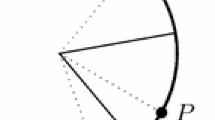Abstract.
In this paper we introduce harmonic analysis (Fourier series) as a tool for characterizing the existence of Nash equilibria in two-dimensional spatial majority rule voting games with large electorates. We apply our methods both to traditional proximity models and to directional models. In the latter voters exhibit preferences over directions rather than over alternatives, per se. A directional equilibrium can be characterized as a Condorcet direction, in analogy to the Condorcet (majority) winner in the usual voting models, i.e., a direction which is preferred by a majority to (or at least is not beaten by) any other direction. We provide a parallel treatment of the total median condition for equilibrium under proximity voting and equilibrium conditions for directional voting that shows that the former result is in terms of a strict equality (a knife-edge result very unlikely to hold) while the latter is in terms of an inequality which is relatively easy to satisfy. For the Matthews [3] directional model and a variant of the Rabinowitz and Macdonald [7] directional model, we present a sufficiency condition for the existence of a Condorcet directional vector in terms of the odd-numbered components of the Fourier series representing the density distribution of the voter points. We interpret our theoretical results by looking at real-world voter distributions and direction fields among voter points derived from U.S. and Norwegian survey data.
Similar content being viewed by others
Author information
Authors and Affiliations
Additional information
Received: 7 July 1995 / Accepted: 14 May 1996
Rights and permissions
About this article
Cite this article
Merrill III., S., Grofman, B. Modeling large electorates with Fourier series, with applications to Nash equilibria in proximity and directional models of spatial competition. Soc Choice Welfare 14, 545–562 (1997). https://doi.org/10.1007/s003550050086
Issue Date:
DOI: https://doi.org/10.1007/s003550050086




